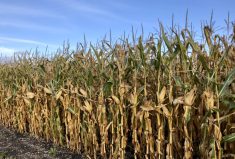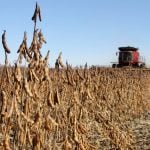University of Guelph — Ontario has lost 319 acres of farmland a day since 2016, according to the recently released 2021 Census of Agriculture. The number of small- to medium-sized farms is decreasing while the number of larger farms is increasing. These numbers show some family farms’ difficulties in maintaining a viable agricultural livelihood.
But more farmers are diversifying land use and businesses on their farms, whether related to agriculture or not – such as a winery, wedding venue or winter retreat – to generate additional revenue and support primary production.
What are the rules for creating diversified uses on farms? Many farmers may be unsure how to approach their municipality to start such a venture.
Read Also

Cycle swings dictate farming profitability
It can be profitable to understand where the crop markets are positioned in the context of their big-picture cycles.
And what about protection of agricultural land? How are on-farm diversified uses supported without introducing a new form of urban sprawl?
Why it matters: Diversifying the use of agricultural land can create a profit stream for some farms while protecting the land.
An OMAFRA-funded research project led by Wayne Caldwell, Pam Duesling (University of Guelph PhD candidate and general manager of development services in Brant County) and Emily Sousa (Masters student and land use policy analyst with the Ontario Federation of Agriculture) explores the land use policy framework for on-farm diversification with the joint goals of protecting farmland and contributing to agricultural livelihoods.
Two main provincial documents permit farm diversification: the 2020 Provincial Policy Statement (PPS) and the 2016 OMAFRA Guidelines on Permitted Uses in Ontario’s Prime Agricultural Areas.
The PPS documents indicate prime agricultural areas are to be protected for long-term use for agriculture, and allowed uses include agricultural, agriculture-related and on-farm diversified uses.
The latter can include value-added uses, home occupations, industries, agri-tourism, retail, restaurants and more. They must meet five criteria under the guidelines:
- Must be located on a farm;
- Must be secondary to the principal use of the property;
- Must be limited in size and scale to two per cent of the farm to a maximum of one hectare;
- Can include but is not limited to home occupations, home industries, agri-tourism uses and uses that produce value added-agricultural products; and
- Shall be compatible with and not hinder surrounding agricultural operations.
The guidelines inform farmers and municipalities about implementing on-farm diversified uses in Ontario and ensure they support agricultural areas.
The University of Guelph’s province-wide research received information from more than 150 farmers, 40 municipalities and three provincial agencies. It showed that municipal plans and zoning bylaws across Ontario are inconsistent in how they permit diversified farm uses to balance farmland protection and economic opportunity.
Where policies do exist, the research found that ensuring the process isn’t too cost- or time-intensive for farmers is critical to incentivizing them to undertake new ventures.
For example, in addition to the cost and time required to secure a zoning bylaw amendment, one farmer said that attending public meetings and being open to public scrutiny was “excruciatingly difficult” and that they “wouldn’t wish it on their worst enemy.”
In contrast, some municipalities turn “red tape” into “green tape” policies. A participating farmer in the research shared how as-of-right zoning was beneficial for their agri-tourism and value-added enterprise.
“Because the whole farm is zoned as that ‘agricultural plus’ designation, we’re able to run events without having to get any specific permits. That designation allows us to go forward without too much hassle,” they said.
The research also showed examples of diversified farm ventures and the successes and challenges farmers faced.
The Pfisterer Farm was created in 2019 by first-generation Wellington County farmers Jessica and Ryan Pfisterer to provide local sustainably raised pastured meats, eggs and other seasonal products through farmgate sales. A positive relationship with the local township and existing provisions within the zoning bylaw enabled Pfisterer Farm to diversify and offer a successful bed-and-breakfast glamping experience.
Despite this relationship, expansion plans for a farm market have halted due to outdated municipal zoning that would otherwise require the Pfisterers to secure a costly bylaw amendment. As Pfisterer notes, “on-farm diversification is new and the municipality isn’t there yet. We farmers and business owners looking to these diversified uses are steps ahead of policy.”
Aside from encouraging municipalities to catch up with the provincial guidelines and update their zoning, Pfisterer encourages other farmers to recognize that “there are caveats to diversification” and plan accordingly.
The Pfisterers had to account for moving farm equipment, electric fences and biosecurity when inviting the public to their operation and they worked with a lawyer on a comprehensive liability waiver.
In Norfolk County, Charlotteville Brewing Company, run by Tim Wilson and Melanie Doerkson, opened the doors to their diversification enterprise in 2018 when they converted two turn-of-the-century barns into a farm brewery.

Today, the company brews and serves craft beer but also features artisanal food, offers live music, produces 60 per cent of its ingredients and employs six people.
They said the provincial guidelines assisted them in designing a business balanced in size and scale that reused buildings no longer needed for agriculture.
While the guidelines encourage the reuse of existing farm buildings, Wilson said farmers interested in following a similar path should be forewarned. Insurance, high costs for engineered drawings, mixed uses in the Ontario Building Code, and a potential “immense jump in [property] taxes” are expenses that should be accounted for in a business plan.
The research found the guidelines are a helpful tool but they are underutilized by municipal counterparts. Further actions to address challenges, such as ensuring a new venture doesn’t impede normal farm practices, or use too much agricultural land, are needed.
Parking is one example. The research found that parking will quickly overtake the footprint of land a farmer can use to for the new venture, risking impact on production.
Advice from farmers interviewed is to “not waste precious real estate on parking.” Strategies on other agritourism operations include use of a ticketed timed reservation system or providing shared transportation to the site.
The research encouraged farmers to ask their municipality for a pre-submission consultation, with all municipal departments present, to discuss their business idea and learn what applications, approvals, fees and timelines would be required to establish their on-farm diversification venture.
Grants or assistance from municipal economic development or tourism departments may be available. Municipalities are encouraged to design “farmer-friendly” processes and fees that are simple, streamlined and scaled to recognize the complexity of required approvals.
These include zoning bylaw amendments, site plan control, studies, engineered drawings, tax changes, development charges, building code requirements and permits and licences.
The research indicated the value of positive neighbourly relations to ensure successful outcomes.
The project’s final report is expected to be released this summer. Researchers are creating a ‘compatibility’ tool intended to be used by municipalities and farmers or their agents when discussing a proposed on-farm diversified use.
More information about the research can be found on Caldwell’s website.












